Sa discrétion dans notre paysage culturel actuel est inversement proportionnelle à l’ampleur de sa tâche. Même dans les agences de pub ou dans les services de relations publiques, son nom est presque inconnu, tout du moins en France. Il faut dire qu’il était un fervent partisan d’une « gouvernance de l’ombre » et ses écrits ne tarissent pas sur ce sujet. « créer du besoin, du désir et créer du dégoût pour tout ce qui est vieux et démodé » fut un de ses leitmotiv. « Fabriquer du consentement », « cristalliser les opinions publiques » furent les titres de 2 de ses œuvres écrites (une quinzaine en tout). « Dompter cette grande bête hagarde qui s’appelle le peuple ; qui ne veut ni ne peut se mêler des affaires publiques et à laquelle il faut fournir une illusion » en furent d’autres.
Le titre de son livre le plus célèbre ? « Propaganda, comment manipuler l’opinion en démocratie ». Tout un programme. Toute une idéeologie qui va d’abord être accueillie avec scepticisme par les oligarques et les politiques, puis utilisée à tort et à travers, dès les premiers succès, et ce jusqu’à notre époque contemporaine qui en fait l’apologie.
À l’heure ou les débats pro et anti « conspiration » font rage sur les événements majeurs de notre période contemporaine, une petite mise au point historique sur la naissance et l’évolution de ce que nous appelons en France les « relations publiques » ou encore la « com » s’impose.
LA PUCE À L’OREILLE
Au début du siècle, étudiant en agriculture, fils d’un marchand de grains très prospère, Bernays s’ennuie et décide de se lancer dans le journalisme. Il rencontre à New York un ami qui a hérité de 2 revues scientifiques et qui a des difficultés dans ses prises de décisions quant à l’orientation de ces revues.
Au même moment, en ville, une pièce de théâtre dont le sujet est très tabou est en train de se mettre sur pied. Cette pièce décrit l’histoire d’un homme qui a la syphilis et qui le cache à sa future femme. Ils ont un enfant qui naît malade. Bref, une sujet très délicat pour l’époque.
Bernays teste alors une méthode qui sera le fondement de sa méthodologie : il met sur pied un comité pour la propagation d’idée en médecine, chapeauté par l’une de ces revues. Ce comité, à droits d’entrée payants, et dont les membres sont d’éminents médecins et professeurs en médecine, parraine la pièce de théâtre en question. Et c’est le succès pour la pièce... tout en donnant un coup de boost à l’une des revues de l’ami de Bernays.
Technique classique me direz-vous... oui, en effet, c’est une technique classique aujourd’hui. Mais à l’époque, c’est révolutionnaire.
Car, à l’époque ce genre de technique de communication qui procède de biais est totalement inconnue.
En effet, au début du siècle, les messages publicitaires sont simples : il s’agit de vanter un produit en le décrivant, tout simplement, pour ce qu’il est.
Bernays procède par biais, il utilise des figures d’autorité et, via elles, rend le produit intéressant voir incontournable.
LA PREMIERE EXPERIENCE D’ENVERGURE : LA COMMISSION CREEL
tout va se précipiter avec la constitution de l’« U.S. Committee on Public Information », plus communément appelé la « commission Creel » à laquelle notre ami Edward Bernays va contribuer de manière très active. Qu’est-ce que cette commission ? Une image suffit pour la rappeler à votre mémoire : « I want you for us army ». Vous vous rappelez ? l’oncle Sam qui pointe un doigt accusateur.
Car, en 1917, la population américaine est largement pacifique et n’a aucunement l’intention d’entrer en guerre, alors que le gouvernement est fermement décidé à s’engager dans le conflit, pour des raisons industrielles. Pour la première fois dans l’histoire, une commission va être créée par un gouvernement pour changer une opinion publique. Et c’est précisément au sein de cette commission que Bernays va gagner ses premiers galons aux yeux des grands décideurs. La commission Creel va mobiliser un grand nombre d’intellectuels, de journalistes, de penseurs qui vont tenter un coup d’éclat. Ils vont mettre en place tout un ensemble d’outils et de méthodes destinés à gérer les foules et finalement à faire basculer rapidement l’opinion. Et ils vont réussir avec panache. Les bases de la propagande moderne vont être jetées.
De nombreux concepts aujourd’hui connus et banalisés seront testés : distribution massive de communiqués, appel à l’émotion dans des campagnes ciblées de publicité, recours au cinéma, recrutement ciblé de leaders d’opinion locaux, mise sur pied de groupes bidon (par exemple des groupes de citoyens) et ainsi de suite.
Walter Lippmann, un de ses membres influents, souvent donné comme le journaliste américain le plus écouté au monde après 1930, a décrit le travail de cette Commission comme étant « une révolution dans la pratique de la démocratie », où une « minorité intelligente », chargée du domaine politique, est responsable de « fabriquer le consentement » du peuple, lorsque la minorité des « hommes responsables » ne l’avaient pas d’office.
Cette « formation d’une opinion publique saine » servirait à se protéger « du piétinement et des hurlements du troupeau dérouté » (autrement dit : le peuple), cet « intrus ignorant qui se mêle de tout », dont le rôle est d’être un « spectateur » et non un « participant ». Car, en effet, l’idée qui a présidé à la naissance de l’industrie des relations publiques était explicite : l’opinion publique devait être « scientifiquement » fabriquée et contrôlée à partir d’en haut, de manière à assurer le contrôle de la dangereuse populace.
Petite aparté : le trollage payé et certaines formes de marketing viral sur internet ne sont que l’application moderne du « standing man » technique qui consistait à utiliser une personne reconnue dans une communauté pour se lever soudainement lors d’un événement local et scander une opinion afin de détourner un débat calme et rationnel et de transformer une ambiance de dialogue serein en discussion émotionnelle. Car l’émotion est le premier pas vers l’irrationnel, qui est la porte entrouverte vers l’inconscient, ce domaine que nos publicitaires exploitent au maximum.
Bref, lors de la commission Creel, Bernays a brillé dans ces milieux qui ébauchaient les techniques de propagande moderne en imposant les travaux de son oncle, et de personnes comme Gustav Lebon notamment en expliquant que la psychologie de foule est différente de la psychologie individuelle.
La masse des gens ne peut penser rationnellement, et c’est donc à la minorité intelligente de façonner le destin de cette masse... Ce constat mis noir sur blanc de façon scientifique par Freud, et qui est en adéquation parfaite avec les courants de pensée qui sévissent dans les éltes de l’époque, va permettre à Bernays, en tirant les leçons de la commission Creel, d’inventer littéralement le « public relation ».
L’ŒUVRE DE BERNAYS : L’INSTITUTIONNALISATION DES RELATIONS PUBLIQUES
Pourquoi les relations publiques ?
Après la Première Guerre mondiale, la machine industrielle dont les capacités ont été démultipliées doit trouver des marchés afin de continuer à fonctionner (ce sera le même problème après la Seconde Guerre mondiale). Il faut donc créer des besoins car à l’époque le citoyen occidental de base consomme en fonction de besoins vitaux, et n’accorde que des exceptions à la frivolité. Il faut donc exacerber le désir de consommer et rendre les frivolité obligatoires, incontournables et intimement liées aux gains de liberté apportés par les progrès sociaux...
Par ailleurs,les entreprises au début du XXe siecle aux États-Unis font face à une situation difficilement gérable (grèves, conflit sociaux...) elles oscillent entre répressions dures et punitions par tribunaux interposés, elles font appel à des juristes, à des journalistes sans grand succès, et la fuidité de son fonctionnement est fortement compromise. Grace au succès de la commission Creel, quand Bernays monte son bureau et propose ses services, il est pris au sérieux par les entreprises privées et surtout les trusts.
Dans une époque ou les lois antitrust sont contournées et ou ce que les citoyens américains appellent alors les « barons voleurs » accumulent des fortunes colossales, la démocratie qui porte en blason la liberté individuelle et la liberté d’expression se doit d’apparaître en façade car elle est l’un des fondements de la motivation du travailleur, en Occident.
Bernays crée donc son bureau des relations publiques et invente le métier de conseiller en relations publiques, l’un de ses premiers clients fut l’« american tobacco corporation ».
Entre les guerres Berneys va littéralement inventer des concepts :
- le petit déjeuner américain « eggs and bacon » en mettant sur pied un comité de médecins qui vont prôner les valeurs d’un fort apport calorique au lever. Car il faut le savoir, au début du siècle, les Américains sont plutôt adeptes d’un petit déjeuner frugal, ce qui ne colle pas avec l’industrie du porc qui croît plus vite que la demande... Or, le comité de médecin ne va pas seulement prôner un apport calorique important... il va bien spécifier « bacon ».
- Il va persuader les Américains d’acheter des pianos. Encore une fois, il biaise en infiltrant les milieux d’architectes qui vont influencer leurs clients dans l’adjonction d’une salle de musique dans les maison.
Et que faire quand il y a une pièce dédiée à la musique dans une maison ? La remplir. Et quel est l’objet qui va le mieux la remplir tout en donnant du cachet ? Un piano. Encore un succès.
- Il fera de même pour les maisons d’éditions en « forçant » l’insertion des bibliothèques incrustées aux murs des maisons.
- Le petit déjeuner du président des États-Unis avec des vedettes du show-biz afin de transformer l’image austère et distante de ce dernier, et ça existe encore aujourd’hui.
Il va par la suite affiner ses méthodes et commencer à se lancer dans des opérations de très grande envergure.
Voici 4 missions « Bernaysiennes » qui, j’en suis sûr, vont vous laisser pantois.
LE FÉMINISME UTILISÉ À DES FINS MARKETING
Il faut dire qu’à cette époque le marché de la cigarette stagne, suite à une progression fulgurante durant la Première guerre mondiale et dans les premières années d’après-guerre. En vendant des milliards de cigarettes à l’armée américaine qui les intégrait au paquetage du soldat, les compagnies de tabac avait franchi une étape décisive, en transformant l’image de la cigarette qui avant la guerre était dénigrée au profit du cigare ou de la chique jugés plus « virils ». Au début des année 20, donc, la cigarette est passée de « tabac pour mauviettes » à « symbole de l’Amérique fraternelle et virile ».

Ce dernier analyse la situation, soumet ses observations à un psychiatre de New York qui confirme ses soupçons : la cigarette constitue pour les femmes un symbole phallique qui représente le pouvoir de l’homme. Pour faire fumer les femmes il faut d’abord leur faire conquérir de manière symbolique des positions occupées par la gent masculine. Bernays vient de trouver ses leaders d’opinion et il orchestre un des grands coups de marketing de l’histoire en détournant une marche catholique (la procession de Pâques) pour en faire un événement politique au profit des suffragettes. Une dizaine de jeunes premières, invitées par lui et soigneusement instruites du plan de bataille, se présentent au-devant de la procession, exhibent leurs cigarettes, et s’allument devant les photographes des journaux. Bernays lance le slogan aux journalistes présents : « elles allument des flambeaux pour la liberté ».
Du véritable petit lait, et d’ailleurs je ne résiste pas à un petit copier-coller d’un commentaire sur cet événement que j’ai lu sur un blog : « ça coule de source. Les journaux accordent la première page à la nouvelle. Les conservateurs vendent de la copie grâce à l’aspect scandaleux. Les progressistes sont charmés. Les féministes exultent, jubilent de l’ampleur du phénomène médiatique. Toute la société états-unienne est flattée sur la muqueuse par l’imparable évocation de la sacro-sainte liberté. La femme éprise d’émancipation devra simplement fumer. Fumer c’est voter ! Tout le monde profite des photos sexy de ces jolies jeunes femmes. Tous y gagnent ! C’est fantastique. Bernays avait compris que la femme de l’après-guerre avait bossé dans les usines pendant que les hommes étaient au front et il lui offrait un symbole phallique digne de l’ampleur de ses revendications, la clope. » Tout est dit.
Et Bernays d’enchaîner dans les années qui suivent en recrutant et créant des associations et autres collectifs médicaux et en faisant dire aux experts que la santé de la femme, c’est la minceur... et que le meilleur moyen d’y parvenir, c’est la clope.
Des publicités dans les journaux et les magazines, présentées par des regroupements de docteurs, de médecins de famille, de dentistes et d’instituts plus ou moins bidons (tous fondés par Bernays avec des fonds de American Tobacco) proposent ensuite carrément à la femme de tendre la main vers une cigarette plutôt que vers un bonbon, ce qui est tellement meilleur pour la santé. La campagne connaît un tel succès que les grands confiseurs et les producteurs de sucre attaquent American Tobacco en justice et réclament des dommages et intérêts. C’est un triomphe, la femme est maigre, elle est libre, elle respire la santé !
L’EXPLOSION DE L’AUTOMOBILE
Il faut dire que les cartels banquiers, qui avaient fait main basse via des procédures d’expropriation sur d’immenses terres du Midle West durant la récession qui suivit le krach de 1929, devaient bien décider de ce qu’elles allaient en faire.
Le plan pour le développement de ces étendues arrivait à maturité, et les maquettes criantes de réalité présentant le monde des années 60, restent à ce jour un incroyable témoignage des capacités de projections des décideurs de l’époque. Certaines personnes croient que ce modèle de civilisation est le fruit du hasard, ou encore un avènement naturel inhérent à l’expansion économique. Pourtant force est de constater qu’au contraire ce modèle est le fruit d’une planification dont la rapidité d’exécution a été planifiée, ce qui est tout de meme curieux quand on sait que seule la machine industrielle boostée par le conflit mondial a pu mettre en œuvre cet agenda et que cette exposition a eu lieu de 1929 à 1941.

De même, le fameux futurama de l’expo de New York d’« avant guerre » comme vous pourrez le constater sur ces vidéos se faisait l’apôtre d’une agriculture fortement industrialisée avec gros apport d’engrais (industrie chimique). De ce côté, on peut dire que la boucle a été bouclée et que les affaires ont prospéré.
RÉPUBLIQUE BANANIERES
La fameuse « république bananière »... expression que nous utilisons tous, revenue très à la mode vu l’air du temps... Mais au fait d’où vient cette expression ?
Edwaaard ? c’est encore toi ? non ? Si. Et c’est le Guatemala au début des années 50 qui va faire les frais de la méthode Bernays,et qui va imprimer dans nos consciences, l’expression « république bananière ».
Cette fois le client de notre brave homme est la united fruit une multinationale qui, comme sont nom l’indique, fait dans les fruits et ses dérivés. Une multinationale bien connue en Amériqe centrale et en Amérique du Sud. Multinationale qui porte parmi ses principaux actionnaires les frères Dulles (je laisse ici un vide que les lecteurs d’agoravox sauront remplir concernant les frères Dulles qui mériteraient un article à eux tout seuls). Ces frères Dulles que Bernays a rencontrés durant la Seconde Guerre mondiale, période durant laquelle il travaillait pour le gouvernement américain, période opaque de sa carrière.
En 1951 donc, au Guatemala après une élection libre, Jacobo Arbenz Guzmán est élu et il entame un processus de saisi de terres que la United Fruits n’utilisait pas (en fait apparemment il ne les saisit pas vraiment : il oblige la United Fruits de vendre les terres non utilisées). Bref, coup dur pour cette noble entreprise américaine habituée à faire ce qu’elle veut en Amérique du Sud, et qui prévoyait un vaste plan de monoculture de bananes dans cette région.
Bernays est alors engagé pour mener une campagne de relations publiques destinée à discréditer le pouvoir nouvellement et démocratiquement mis en place.
En quelques semaines, ce gouvernement socialiste qui n’a même pas de contact avec Moscou va être dépeint comme un dangereux groupuscule de communistes à la solde du bloc russe, destiné à mettre en place un poste avancé proche des frontières américaines. Cette campagne sera longue et active.
Ce détournement d’informations va permettre de justifier une opération de la CIA sous la forme, entre autres d’un bombardement de la capitale. Une junte militaire (Castillo Armas), aussitôt reconnue par les États-Unis, prendra le pouvoir, entraînant la naissance de mouvements de guérilla. Le poète Pablo Neruda dénoncera les « republicas bananas », républiques d’Amérique centrale soumises aux compagnies américaines, et créera ainsi une expression toujours et plus que jamais d’actualité.
Et on dit merci qui ces messieurs de la united fruits ? Merci Edwaaaaaard..
LE FLUOR... c’est bon pour les dents.... mmmmmouais.
Le mythe des bienfaits du fluorure pour la dentition est né aux États-Unis en 1939. Pourquoi ? La Compagnie d’aluminium ALCOA, qui faisait l’objet de poursuites pour déversement toxique de... fluorure, commanda, sur les conseils de qui vous savez, à des scientifiques dépéchés par qui vous savez, une étude faisant l’éloge de ce déchet industriel dérivé de la production de l’aluminium, des fabriques de munitions (et plus tard des centrales nucléaires). L’étude allait jusqu’à proposer qu’on ajoute la substance à l’eau des villes. En 1947, ALCOA, réussit à placer un de ses propres avocats à la tête de l’Agence fédérale de sécurité, ce qui lui donnait ainsi le contrôle des Services de santé publique. Sous la gouverne de celui-ci, 87 villes américaines établirent un programme de fluoridation de l’eau, c’est-à-dire que les fonds publics servaient (et servent encore) à ACHETER un déchet toxique dont l’élimination était très coûteuse et à l’inclure dans l’eau potable consommée par la population.
Combien de municipalité encore aujourd’hui pratiquent encore cette méthode de fluoration de l’eau, y compris en France ? Je n’ose faire des recherches tellement je crains les résultats.
Une fois encore merci qui ?
LA DOCTRINE, sa justification, et ses contradictions majeures :
Bernays, tout au long de sa vie, va user d’une doctrine froide et assez cynique doublée d’une justification idéologique basée sur le long terme, afin de justifier ses agissements.
Il considère sa tâche comme un effort à long terme destiné à l’avènement doucement forcé (mais à peine, hein ?) d’une démocratie basée sur l’économie et le commerce dirigé par une élite.
Il pose assez honnêtement et naïvement d’ailleurs, comme postulat, le fait que la masse est incapable de parvenir à un état de paix collective et de bonheur par elle-même, et que donc cette masse a besoin d’une élite qui la contrôle et qui la dirige à son insu en ce qui concerne les décisions importantes.
Pour lui le bon sens commun n’existe pas, et s’il existe, il ne peut porter l’appellation « bon sens » car il induit un mode de consommation trop lent pour les capacités industrielles et leur besoin de croissance... Il doit donc être refondu par des élites.
Pour lui, la foule n’a pas besoin d’esprit car elle est avant tout gouvernée par sa moelle épinière irrationnelle, et il ne sert à rien d’élever les foules, puisqu’elles sont plus facilement contrôlables en jouant sur cette irrationalité.
Pourtant, fait curieux, Bernays se réclamait d’une certaine éthique. Il faut savoir que cet homme a aussi joué un rôle fondamental dans le congrès pour l’intégration des hommes de couleurs... un événement (tout de même assez isolé au milieu des autres cyniques campagnes dont il a été le chef d’orchestre) dont il se servira pour justifier sa position de mercenaire au services de nombreuses causes qui, mises ensemble, constituent notre monde moderne « libre » à l’occidental.
Car Bernays s’efforce dans ses mémoires de justifier son œuvre. Il n’a jamais été membre de l’« association des relations publiques américaines » car il jugeait ses membres sans éthique et il s’offusqua à la nouvelle que Goebbels possédait toutes ses œuvres et se serait largement inspiré de son travail pour ériger la propagande qui mena les nazis au pouvoir dans l’Allemagne des années 30.
En effet, Bernays voulait que ses méthodes soient présentées en toute « honnêteté » afin d’ouvrir une route à 2 voies à la communication publique : une voie de contrôle et une voix de réaction du peuple à ce contrôle. C’est tout du moins ce qu’il essaie de faire passer lors d’interviews ou dans ces écrits, dans de rares moments. Hélas ces quelques moments d’ouverture sont assez rapidement recouverts par le volume d’écrits et d’actes professionnels qui vont à l’encontre de ce pseudo-principe d’interactivité.
Bernays fut un véritable champion en matière de double langage et il eut énormément de mal à se confronter à ses contradictions, totalement obnubilé par la vision malsaine de la condition humaine induite par son oncle.
On est a mille lieux de ce que Kant par exemple réclamait en disait qu’il faut un espace public de libre discussion où les gens puissent débattre et échanger des idées, se placer du point de vue de la raison et de l’universel, justifier devant les autres les conclusions et affirmations auxquelles ils parviennent et rendre disponible les faits qui nourrissent une conclusion.
Pourquoi ? parce qu’on est dans l’idée d’une minorité intelligente au service de ceux qui ont les moyens de s’adresser à elle pour obtenir de la foule un consentement à des conclusions déterminées à l’avance. Tous les comités, agences de relations publiques et campagnes instiguées par Bernays offriront une illusion de débat, où tous les outils nécessaires à la perversion de ce débat sont prêts à intervenir à tout moment.
Le coup fomenté au Guatemala et justifié par la campagne médiatique qu’il avait orchestré aurait dû lui faire ouvrir les yeux...
Pourtant, avec le recul, il faut constater qu’il ne le fit pas et que ces justifications teintées de naïveté ne tiennent pas une analyse approfondie, surtout vu le caractère opaque de ses missions durant la Seconde Guerre mondiale, et ses liens avec des sbires tels que les frères Dulles.
La « machine » Bernays s’est emballée dès ses débuts et ne cessera jamais ses méfaits au profit de la croissance économique non pas au service de peuples, mais bien dans son asservissement à la consommation.
La deuxième voie proposée par Bernays, celle de l’inter-réaction des hommes fut étouffée par le volume des campagnes de spins.
Bernays va tellement piocher dans les théories de son oncle qu’il va finalement croire lui-même que l’homme n’est dirigé que par des forces irrationnelles.
Il va mettre en pratique des méthodes qui vont à l’encontre même de ce que le siècle des Lumières avait exigé pour sublimer le bon sens humain.
L’humanité moderne va tellement être martelée par ce cynisme qu’elle va en devenir cynique elle-même et épouser l’idée selon laquelle l’homme est un être tiraillé par sa bassesse et piloté par ses instincts les plus enfouis.
Dès le début du siècle, il est évident que la synergie entre les médias de masse et les progrès de la psychologie scientifique vont assurer un pouvoir irrésistible aux minorités « éclairées ». Bernays fut l’un des architectes majeurs de cette synergie qui sévira dans les démocraties comme dans les systèmes totalitaires et qui, n’ayons pas peur des mots, sévit encore plus que jamais, n’en déplaise à ceux qui ironisent sur les "théorie de la conspiration" alors même qu’en France nous évoluons dans une inculture totale en ce qui concerne les relations publiques, les spins doctors et les think tanks, contrairement aux pays anglo-saxons.
Sur ce, je vous laisse avec une citation de notre homme, à titre de fin d’article et d’ouverture de débat.
"Notre démocratie ayant pour vocation de tracer la voie, elle doit être pilotée par la minorité intelligente qui sait enrégimenter les masses pour mieux les guider."
Sources : Livre : Stuart Ewen : a social history of spin.
Livre : Edward Bernays : propaganda édité en 1928 (téléchargeable gratuitement sur le net).
Radio : émission "là-bas si j’y suis" France Inter diffusion 26 novembre 2007
Net : http://en.wikipedia.org/wiki/Fluoride
Net : http://fr.wikipedia.org/wiki/Edward_Bernays





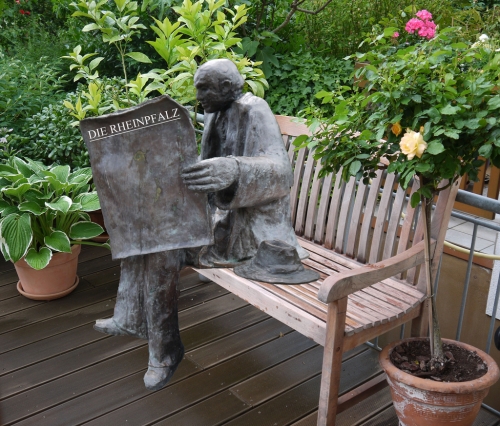
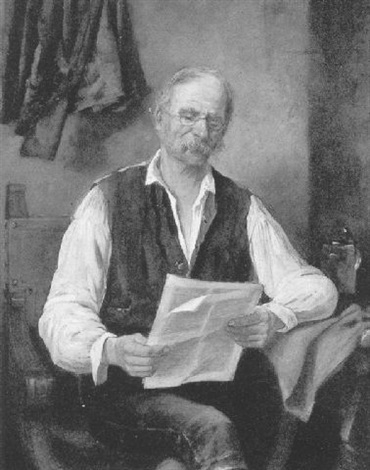
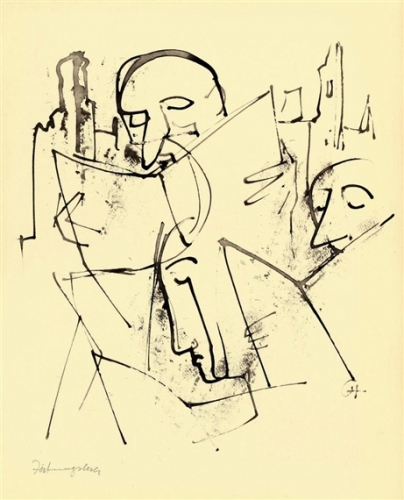

 del.icio.us
del.icio.us
 Digg
Digg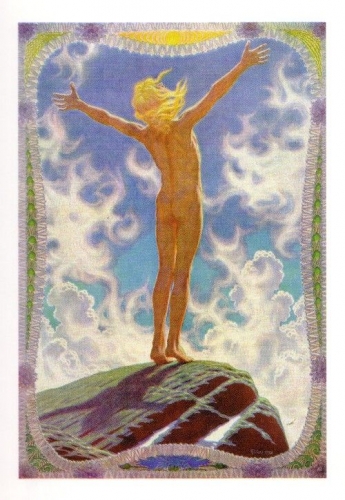
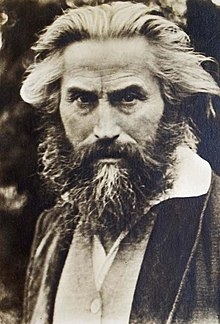 En 1889, Fidus reprend les cours réguliers qu’il s’était promis de suivre à Munich. Il y fait la connaissance de Wilhelm Hübbe-Schleiden, originaire, lui aussi, d’Allemagne du Nord, converti à la théosophie de l’occultiste Madame Blavatsky et partisan d’une politique coloniale allemande. Ce nati de Hambourg était un ami intime de Madame Blavatsky et de son adepte américain Henry Steel Olcott, qui avait fondé aux Etats-Unis une secte théosophique. La religiosité théosophique de Steel Olcott était un mélange obscur de bribes hétéroclites tirées des religions d’Asie et de trucs de prestigiditateur, qui avait pourtant acquis une notoriété internationale. Il faut aussi rappeler que ce cher Henry travaillait accessoirement pour le gouvernement américain. Pour rassembler leurs adeptes allemands, Hübbe-Schleiden édita une revue mensuelle, intitulée Sphinx, dont le graphiste principal fut évidemment le jeune Fidus. Cette collaboration dura trois ans. Influencé par les idées glanées dans la revue, Fidus fit siennes celles d’un « cercle de vie » et d’une « thérapie par la lumière ».
En 1889, Fidus reprend les cours réguliers qu’il s’était promis de suivre à Munich. Il y fait la connaissance de Wilhelm Hübbe-Schleiden, originaire, lui aussi, d’Allemagne du Nord, converti à la théosophie de l’occultiste Madame Blavatsky et partisan d’une politique coloniale allemande. Ce nati de Hambourg était un ami intime de Madame Blavatsky et de son adepte américain Henry Steel Olcott, qui avait fondé aux Etats-Unis une secte théosophique. La religiosité théosophique de Steel Olcott était un mélange obscur de bribes hétéroclites tirées des religions d’Asie et de trucs de prestigiditateur, qui avait pourtant acquis une notoriété internationale. Il faut aussi rappeler que ce cher Henry travaillait accessoirement pour le gouvernement américain. Pour rassembler leurs adeptes allemands, Hübbe-Schleiden édita une revue mensuelle, intitulée Sphinx, dont le graphiste principal fut évidemment le jeune Fidus. Cette collaboration dura trois ans. Influencé par les idées glanées dans la revue, Fidus fit siennes celles d’un « cercle de vie » et d’une « thérapie par la lumière ».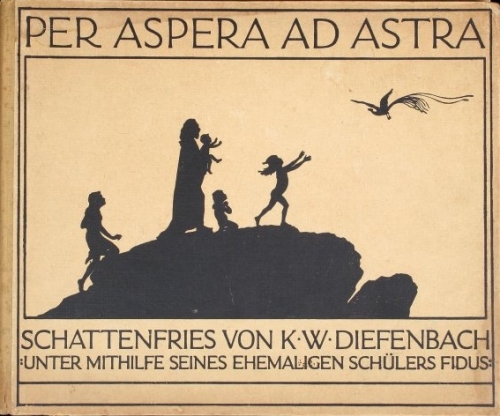
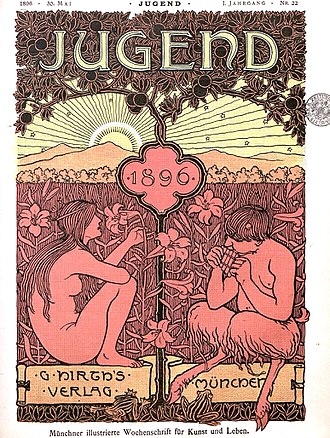 Fidus, lui, quitta Munich pour Berlin, où il travailla pour des revues telles Jugend, Pan et Simplicissimus. Plus tard, il collabora à Kraft und Schönheit et à Die Schönheit. Le regard de Fidus sur la beauté naturelle du corps humain et son style « Art Nouveau », quelque peu édulcoré, firent de lui le graphiste le plus connu d’Allemagne au tournant du siècle.
Fidus, lui, quitta Munich pour Berlin, où il travailla pour des revues telles Jugend, Pan et Simplicissimus. Plus tard, il collabora à Kraft und Schönheit et à Die Schönheit. Le regard de Fidus sur la beauté naturelle du corps humain et son style « Art Nouveau », quelque peu édulcoré, firent de lui le graphiste le plus connu d’Allemagne au tournant du siècle.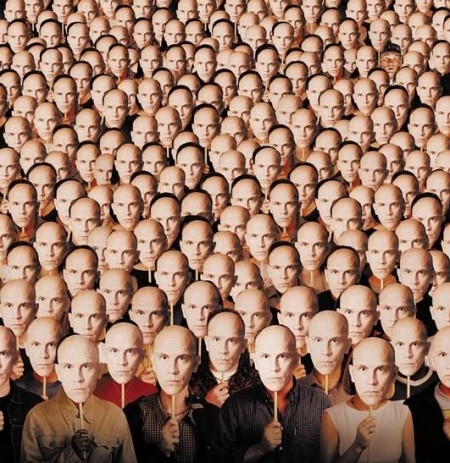




 Certains de ses romans sont passés à la postérité. Une chanson de Serge Gainsbourg mentionne L’amour monstre. Louis Pauwels doit aussi sa renommée à deux essais coécrits avec Jacques Bergier, Le matin des magiciens (1960), et sa suite moins connue, L’homme éternel (1970). Le succès du Matin des magiciens lui permit de lancer, dès 1961, la revue Planète versée dans le réalisme fantastique (l’Atlantide, les extra-terrestres dans l’histoire, le Tibet mystérieux, les expériences parapsychologiques, etc.).
Certains de ses romans sont passés à la postérité. Une chanson de Serge Gainsbourg mentionne L’amour monstre. Louis Pauwels doit aussi sa renommée à deux essais coécrits avec Jacques Bergier, Le matin des magiciens (1960), et sa suite moins connue, L’homme éternel (1970). Le succès du Matin des magiciens lui permit de lancer, dès 1961, la revue Planète versée dans le réalisme fantastique (l’Atlantide, les extra-terrestres dans l’histoire, le Tibet mystérieux, les expériences parapsychologiques, etc.). Ce zélateur anti-écologiste du progrès technicien s’intéressait à l’Europe. Dans son maître-livre, Le droit de parler (Albin Michel, 1981), le recueil de ses premières chroniques « révolutionnaires – conservatrices » du Figaro Magazine préfacé par Jean-Édern Hallier, il revient régulièrement sur l’avenir de notre continent. « Pour que l’Europe trouve son indépendance et assure sa sécurité, elle n’a pas d’autre voie que la volonté de puissance. Nous devons avoir le dessein de devenir l’une des grandes puissances mondiales, y compris dans le domaine militaire. Nous en avons les moyens. Nous avons le nombre. […] Nous avons à nous affirmer et à nous manifester comme union des nations du vieux monde central, communauté vivante de peuples historiques concrets, forgeant concrètement leur sécurité, conscients de leur originalité, soucieux de leur rayonnement (p. 219). »
Ce zélateur anti-écologiste du progrès technicien s’intéressait à l’Europe. Dans son maître-livre, Le droit de parler (Albin Michel, 1981), le recueil de ses premières chroniques « révolutionnaires – conservatrices » du Figaro Magazine préfacé par Jean-Édern Hallier, il revient régulièrement sur l’avenir de notre continent. « Pour que l’Europe trouve son indépendance et assure sa sécurité, elle n’a pas d’autre voie que la volonté de puissance. Nous devons avoir le dessein de devenir l’une des grandes puissances mondiales, y compris dans le domaine militaire. Nous en avons les moyens. Nous avons le nombre. […] Nous avons à nous affirmer et à nous manifester comme union des nations du vieux monde central, communauté vivante de peuples historiques concrets, forgeant concrètement leur sécurité, conscients de leur originalité, soucieux de leur rayonnement (p. 219). »













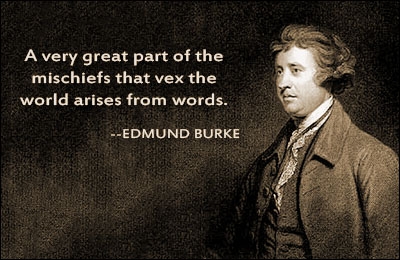
 Such an apology and a reform (or series of reforms) the real revolutionaries mightily feared. Never had they actually sought reform of French society, whatever their claims and protestations. Instead, from the moment they began the revolution in 1789, they wanted to destroy and overturn all that opposed them and to do so utterly and completely, leaving no remnant and no possible opposition. To destroy as violently and wholly as possible, they needed to make a caricature of the aristocrat and the monarch. They needed to take the particular evils of each and make the average person believe them the universal and norm of each. Rather than examining the human condition, the true revolutionaries exaggerated its faults as manifested in the elites of society. They, Burke claimed in true Aristotelian and Thomistic fashion, redefined the thing, claiming its accidents to be its essence. Being revolutionaries, they could not create, they could only mock and pervert. Though the revolutionaries claimed to hate the violence and errors of the aristocracy, they submitted themselves to the very same evils, creating excuses for their own sins, as if necessary to expiate all of those of the past.
Such an apology and a reform (or series of reforms) the real revolutionaries mightily feared. Never had they actually sought reform of French society, whatever their claims and protestations. Instead, from the moment they began the revolution in 1789, they wanted to destroy and overturn all that opposed them and to do so utterly and completely, leaving no remnant and no possible opposition. To destroy as violently and wholly as possible, they needed to make a caricature of the aristocrat and the monarch. They needed to take the particular evils of each and make the average person believe them the universal and norm of each. Rather than examining the human condition, the true revolutionaries exaggerated its faults as manifested in the elites of society. They, Burke claimed in true Aristotelian and Thomistic fashion, redefined the thing, claiming its accidents to be its essence. Being revolutionaries, they could not create, they could only mock and pervert. Though the revolutionaries claimed to hate the violence and errors of the aristocracy, they submitted themselves to the very same evils, creating excuses for their own sins, as if necessary to expiate all of those of the past.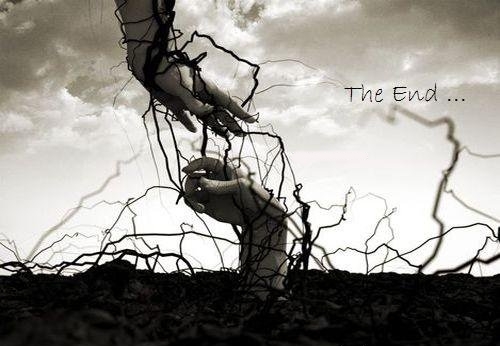
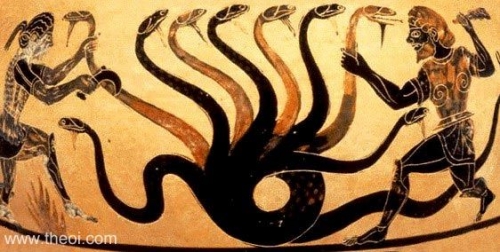
 Lucian, in response to the poet’s fancy, intends to compose an account in which there is no pretense at truth, and which will surpass the work of the poets because he, at least, has openly declared himself a liar. His goal is to provide a pleasant literary spectacle for the entertainment of his highly educated audience, not unlike the various gladiatorial matches that took place in his own day. But, by describing “myth-making” (mythologeo) in this way, he has misunderstood and therefore, unjustly butchered the goal of the poet, the historian, and the philosopher. For the goal of the ancient myth-maker is not to create an entertaining story or a perfectly accurate description, but to explore and explain aspects of the human experience.
Lucian, in response to the poet’s fancy, intends to compose an account in which there is no pretense at truth, and which will surpass the work of the poets because he, at least, has openly declared himself a liar. His goal is to provide a pleasant literary spectacle for the entertainment of his highly educated audience, not unlike the various gladiatorial matches that took place in his own day. But, by describing “myth-making” (mythologeo) in this way, he has misunderstood and therefore, unjustly butchered the goal of the poet, the historian, and the philosopher. For the goal of the ancient myth-maker is not to create an entertaining story or a perfectly accurate description, but to explore and explain aspects of the human experience.

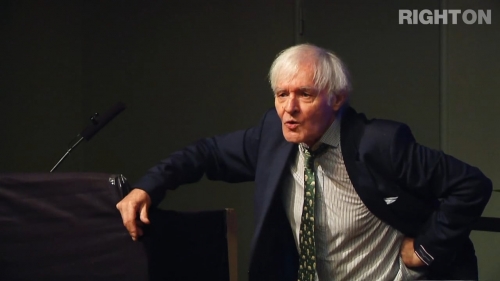
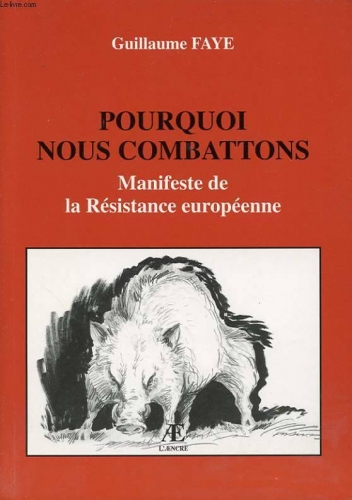 J’ajoute que notre cher ami, brave parmi les braves, s’est mis en tête après Guerre Civile Raciale – dont je suis en train d’achever la relecture avant impression – d’écrire un autre livre. Un roman, cette fois. Sombre et apocalyptique. L’histoire est simple, terrifiante, géniale. En le lisant, vous verrez que je dis vrai.
J’ajoute que notre cher ami, brave parmi les braves, s’est mis en tête après Guerre Civile Raciale – dont je suis en train d’achever la relecture avant impression – d’écrire un autre livre. Un roman, cette fois. Sombre et apocalyptique. L’histoire est simple, terrifiante, géniale. En le lisant, vous verrez que je dis vrai.


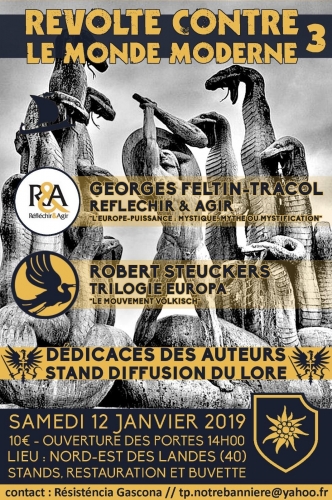




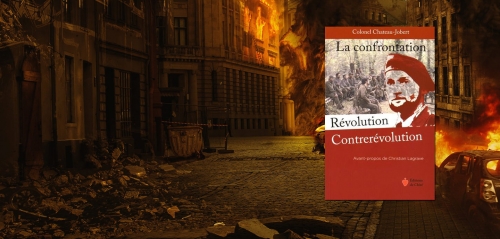

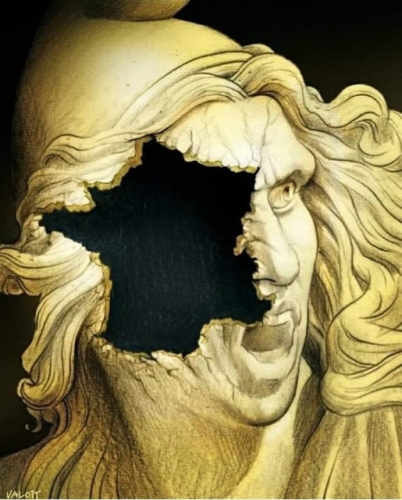

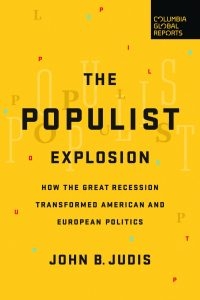 Following the collapse of the Warsaw Pact in 1989 and, two years later, of the Soviet Union itself, there was a widespread sense in the West that the free market had conclusively vindicated itself and that socialism had been just as conclusively relegated to the scrapheap of history. But the political outcome of this period, surprisingly, was not continued electoral triumph for conservative cum classical liberal politicians of the Reagan/Thatcher type who had presided over victory in the Cold War. Instead, an apparent embrace of “markets” by center-Left parties in the West was followed by the rise of “new Democrat” Bill Clinton in the US (1993) and “new Labourite” Tony Blair in the UK (1997). Asked in 2002 what her greatest achievement was, Thatcher replied, “Tony Blair and New Labour. We forced our opponents to change their minds.”
Following the collapse of the Warsaw Pact in 1989 and, two years later, of the Soviet Union itself, there was a widespread sense in the West that the free market had conclusively vindicated itself and that socialism had been just as conclusively relegated to the scrapheap of history. But the political outcome of this period, surprisingly, was not continued electoral triumph for conservative cum classical liberal politicians of the Reagan/Thatcher type who had presided over victory in the Cold War. Instead, an apparent embrace of “markets” by center-Left parties in the West was followed by the rise of “new Democrat” Bill Clinton in the US (1993) and “new Labourite” Tony Blair in the UK (1997). Asked in 2002 what her greatest achievement was, Thatcher replied, “Tony Blair and New Labour. We forced our opponents to change their minds.”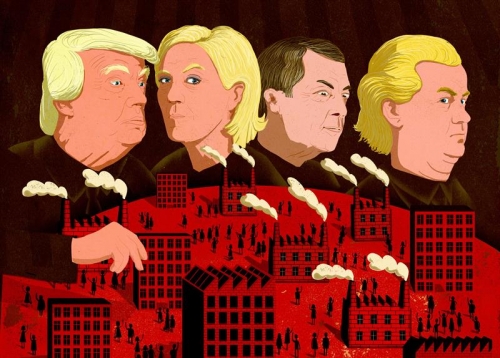



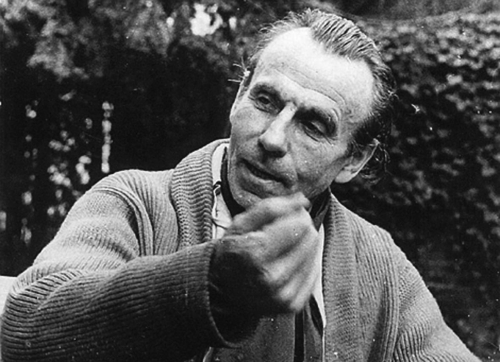
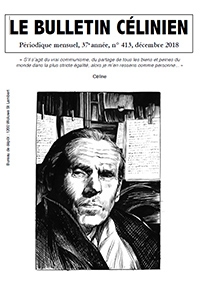 Jusqu’à ce jour, tout le monde (Céline lui-même, ses biographes, le monde judiciaire) considérait qu’en 1950 la justice française avait été bonne fille avec l’auteur des Beaux draps. Anne Simonin, directrice de recherche au CNRS, estime, elle, que le jugement fut d’une « sévérité extrême » ¹. Mais il y a mieux : on sait que l’année précédente, en novembre 1949, le commissaire du gouvernement Jean Seltensperger fut dessaisi du dossier, sa hiérarchie estimant son réquisitoire magnanime. Il se concluait, en effet, par le renvoi de Céline devant une Chambre civique (au lieu de la Cour de justice), ce qui eût entraîné une peine sensiblement moins lourde. L’historienne considère qu’il s’agit en réalité d’une « apparente complaisance », le magistrat ayant, au contraire, fait preuve d’une rare duplicité : « Imaginer renvoyer Céline en chambre civique était une façon habile de l’inciter à rentrer en France et à se produire en justice. Une fois Céline devant une chambre civique et condamné à la dégradation nationale, rien n’interdisait au commissaire du gouvernement de considérer que Céline avait aussi commis des actes de nature à nuire à la défense nationale (art. 83-4 du Code pénal). Le mandat d’arrêt, ordonné en 1945, autoriserait alors à renvoyer Céline en prison avant de le déférer en Cour de justice. Et le tour serait joué. » C’est perdre de vue que, dans son réquisitoire, Seltensperger avait requis la mainlevée du mandat d’arrêt. Et c’est surtout ne pas connaître les arcanes de cette histoire judiciaire. Coïncidence : il se trouve que le père (magistrat, lui aussi) d’un de nos célinistes les plus pointus, Éric Mazet, fut le meilleur ami de Jean Seltensperger. Au mitan des années soixante, les confidences que celui-ci fit au jeune Mazet attestent qu’il n’a jamais voulu piéger Céline, bien au contraire. Le réquisitoire modéré qu’il prononça en atteste et ce n’est pas pour rien que le dossier fut confié à un autre magistrat.
Jusqu’à ce jour, tout le monde (Céline lui-même, ses biographes, le monde judiciaire) considérait qu’en 1950 la justice française avait été bonne fille avec l’auteur des Beaux draps. Anne Simonin, directrice de recherche au CNRS, estime, elle, que le jugement fut d’une « sévérité extrême » ¹. Mais il y a mieux : on sait que l’année précédente, en novembre 1949, le commissaire du gouvernement Jean Seltensperger fut dessaisi du dossier, sa hiérarchie estimant son réquisitoire magnanime. Il se concluait, en effet, par le renvoi de Céline devant une Chambre civique (au lieu de la Cour de justice), ce qui eût entraîné une peine sensiblement moins lourde. L’historienne considère qu’il s’agit en réalité d’une « apparente complaisance », le magistrat ayant, au contraire, fait preuve d’une rare duplicité : « Imaginer renvoyer Céline en chambre civique était une façon habile de l’inciter à rentrer en France et à se produire en justice. Une fois Céline devant une chambre civique et condamné à la dégradation nationale, rien n’interdisait au commissaire du gouvernement de considérer que Céline avait aussi commis des actes de nature à nuire à la défense nationale (art. 83-4 du Code pénal). Le mandat d’arrêt, ordonné en 1945, autoriserait alors à renvoyer Céline en prison avant de le déférer en Cour de justice. Et le tour serait joué. » C’est perdre de vue que, dans son réquisitoire, Seltensperger avait requis la mainlevée du mandat d’arrêt. Et c’est surtout ne pas connaître les arcanes de cette histoire judiciaire. Coïncidence : il se trouve que le père (magistrat, lui aussi) d’un de nos célinistes les plus pointus, Éric Mazet, fut le meilleur ami de Jean Seltensperger. Au mitan des années soixante, les confidences que celui-ci fit au jeune Mazet attestent qu’il n’a jamais voulu piéger Céline, bien au contraire. Le réquisitoire modéré qu’il prononça en atteste et ce n’est pas pour rien que le dossier fut confié à un autre magistrat.
Als rechts Verortete nehmen wir teil an vielfältigen Einbrüchen in die Theoriefelder der Linken. Die Theorieschwäche dieses Gegners äußert sich vornehmlich in abgestandener Phraseologie, die losgelöst von jedem „Sitz im Leben“ gedroschen wird. Reicht auch das nicht aus, den intellektuellen Bankrott zu kaschieren, geht man schnell zu einem Wild-um-sich-schlagen über, das als Ersatz für eine tragfähige Selbstvergewisserung herhalten muss.
Zu den Gebieten, auf denen die Linke sich noch im Hausrecht wähnt, da sie es vor allem in den 60er Jahren des 20. Jahrhunderts annektiert hatte, gehört der Guerillakrieg. Seit Mao und Che zu den Hausgöttern der radikalen Linken erhoben wurden, wird übersehen, dass es auch auf der rechten Seite Strategen des „kleinen Krieges“, mithin des Volkskrieges, gegeben hat. Diese weniger bekannten Figuren waren ebenso Volksbefreier, wie Ho, Mao oder Che zu sein vorgaben, nur ohne revolutionäres Schleppnetz und soziale Experimentierlust.
Zu nennen wären für die Nachkriegszeit Georgios Grivas und seine griechisch-zypriotische EOKA oder der rechte Zionist Menachem Begin und sein IRGUN ZWAI LEUMI. Dessen Erinnerungen unter dem Titel The Revolt gehörten lange zur klammheimlichen Pflichtlektüre angehender Untergrundkämpfer an den westlichen „Metropolenfronten“.
In dieser Reihe hätte auch ein bretonischer Haudegen seinen Platz, der die leidvolle Erfahrung seiner Generation wie seines Landes mit der gewaltsamen Dekolonisierung in einer Strategie der Gegenrevolution fruchtbar machen wollte. Oberst Pierre Chateau-Jobert (1912-2005) hatte aufgrund seiner militärischen Erfahrungen im Maquis (Selbstbezeichnung französischer, aber auch spanischer Partisanen) des Zweiten Weltkriegs sowie im terroristischen Abenteuer der OAS klare Vorstellungen davon, wie Guerilla von rechts auszusehen hätte und wie nicht. Er war kein bedingungsloser Parteigänger der Gewaltlosigkeit, aber ein strenger Lehrer präzise dosierter Gewaltanwendung als ultima ratio.
Er hatte sowohl von der Unbarmherzigkeit des Feindes gelernt als auch von der Stümperhaftigkeit der Kampfgefährten in der OAS. Beides verbannte er aus seiner Lehre vom modernen konterrevolutionären Volkskrieg. Das macht ihn für deutsche Leser zu einer originellen Mischung aus Carl von Clausewitz und Karl-Heinz Hoffmann. Es ist gewiss nicht ungefährlich, seine Gedanken heute wiederzugeben, gefährlicher jedoch wäre auf lange Sicht ihr vollständiges Ignorieren. Die Zeiten werden nicht friedlicher. Wer wird uns beistehen?
Der Augenzeuge
In einem Interview aus dem Jahr 1976 sagte Pierre Chateau-Jobert, dass er in der Realität des Krieges erfahren hatte, was die revolutionäre Maxime, dass der Zweck die Mittel heilige, konkret bedeute. Diese traumatische Erfahrung leitete ihn auf den Stationen seiner militärischen Laufbahn ebenso wie auf den verschlungenen Wegen des rechten Untergrundes im Frankreich der V. Republik. Es sind die Augen eines Berufsmilitärs, die ohne Scheuklappen die Voraussetzungen, Möglichkeiten und Grenzen bewaffneter Aktionen gegen die seinerzeit allgegenwärtig geglaubte kommunistische Gefahr betrachten. Leichtfertigkeit wie Defätismus sind ihm gleichermaßen zuwider.
Geboren wird Pierre Alexandre Joseph Chateau-Jobert 1912 in Morlaix, einer Kleinstadt in der Bretagne in eine konservativ-katholische Familie. Der Vater war im Ersten Weltkrieg gefallen. Die Mutter versucht, die Familie mit einem kleinen Buchladen über Wasser zu halten. Der Traum des Jungen ist es, der Marine beizutreten, doch gesundheitliche Probleme kommen dazwischen, so dass dieser Traum zerplatzt. 1934 tritt er stattdessen in das französische Heer ein. Er besucht die Artillerieschule und wird als sous-lieutenant(eine Art Fähnrich) 1940 bei einem deutschen Luftangriff schwer verwundet. Als er aus dem Koma erwacht, hat Frankreich kapituliert.
Pierre Chateau-Jobert will weiterkämpfen und gelangt zu de Gaulle nach London. Unter dem Decknamen „Conan“ kommt er nach diversen Einsätzen in Afrika (bei der Fremdenlegion) schließlich zu den Fallschirmjägern, genauer zur französischen Sektion des gerade im Aufbau befindlichen britischen SAS. Hier erlernt er erstmals die Grundlagen des verdeckten Kampfes. Er ist mittlerweile Hauptmann, als er im August 1944 über Frankreich mit dem Auftrag abspringt, zusammen mit dem örtlichen Maquis hinter den deutschen Linien für Verwirrung zu sorgen.
Am Ende des Zweiten Weltkrieges ist er bereits Bataillonskommandeur und Dozent an der Schule für Fallschirmjäger, als der Krieg ihn wieder ruft. Freiwillig geht Chateau-Jobert nach Indochina und hat hier, wie viele seiner Offizierskameraden, ein Erweckungserlebnis, was das verstörend Neuartige des revolutionären Krieges betrifft. Frankreich zieht Lehren aus dem Debakel von Dien Bien Phu und gehört militärisch zu den Vorreitern der später sogenannten counterinsurgency, einer breit gefächerten Strategie der Aufstandsbekämpfung, welche die in Asien nachfolgenden US-GIs damals noch mit Geringschätzung zur Kenntnis nehmen.
Chateau-Jobert kehrt auf den Katheder zurück und kommt 1955 zum Generalstab nach Algerien. Noch als Mittvierziger springt er in der Suezkrise mit dem 2. Régiment de Parachutistes Coloniaux, zu dem auch ein junger Leutnant namens Jean de Brem gehört, welcher später das berühmte „Testament eines Europäers“ verfassen wird, über Port Said ab. Im Algerienkrieg kommt es für ihn wie für viele Offiziere, die auf der Grundlage ihres Eides und ihres (blinden) Vertrauens in den neuen Präsidenten Charles de Gaulle für ein französisches Algerien kämpfen zum Schwur.
Als er es wagt, während des Putsches 1961 seinen unmittelbaren militärischen Vorgesetzten für die Sache der putschenden Generäle von Algier zu gewinnen, wird er verhaftet. Oberst Pierre Chateau-Joberts Karriere in der französischen Armee ist damit beendet. Nach seiner Haftentlassung wartet er vergeblich auf eine Wiederverwendung. Die kommt von einer ganz anderen Seite, nämlich von der rechtsgerichteten Untergrundarmee OAS (Organisation de l’armée secrète), die mit Terror für die Belange der Algerienfranzosen streitet. Die Erfahrung mit dem Terrorismus und dem Agieren im Untergrund bildet die zweite wichtige Prägung im Leben des Soldaten Chateau-Jobert.
Von den Querelen innerhalb der OAS-Führung angewidert, von ihrer kriminellen Entartung abgestoßen (hier vergleichbar mit Dominique Venner), nutzt er die Zeit im Untergrund, um sich philosophisch, theologisch und politisch weiterzubilden. Er gerät dabei unter den Einfluss nationalkatholischer Kreise um den Publizisten Jean Ousset, einstiger Sekretär von Charles Maurras und Bekannter von Erzbischof Marcel Lefebvre. Frucht dieser Zusammenflüsse von Praxis und Theorie, gleichsam von Schwert und Buch, ist u.a. sein Kompendium La Confrontation Révolution/Contrerévolution, aus dem die folgenden Überlegungen stammen.
Der Exorzist
Jeder Widerstand beginnt mit einer gesunden Doktrin. Sie liefert die unerlässliche Kampfmoral. Dies zu wiederholen, wird Chateau-Jobert nicht müde. Sie bildet gleichsam die Grundierung für alles, was folgt und ist gleichzeitig der Maßstab, an dem sich alle Aktionen zu messen haben. Widerstand ohne Doktrin entartet oder verliert nach den zu erwartenden Rückschlägen seinen Antrieb. Zu dieser Doktrin, die für den passionierten Antikommunisten Chateau-Jobert nur die christlich-abendländische sein kann, gehört die klare Identifizierung des Feindes.
Der Feind ist die Revolution und dies meint für den Autor nicht eine historisch bestimmte in einer geschichtlichen Abfolge von Revolutionen, sondern die Revolution als quasi metaphysische Größe. Die REVOLUTION, so der Oberst, sei die permanente Auflehnung gegen die gottgewollte Schöpfungsordnung. Sie allein gelte es in all ihren Verkleidungen und zeitgebundenen Erscheinungsformen aufzuspüren und zu bekämpfen. Sie ist das Prinzip des Bösen schlechthin, „une force du mal“.
Die philosophisch-theologischen Ausführungen des Autodidakten geraten im weiteren Verlauf dieses Kapitels unweigerlich in die Nähe der Mythomanie. Sein verbissener Kampf gegen diesen mehr imaginierten Feind ist von einer stark reaktionären Note durchtränkt. Die Revolution ist hier keine einzelne Doktrin, sondern die von Anbeginn der Welt subversiv wirkende Kraft des Widersachers. Chateau-Jobert verfolgt sie wie einen Top-Terroristen, analysiert sie und warnt vor ihren Schlichen. Revolution will nur ihre eigene Dauer und dazu ist ihr jedes Mittel recht. Alle Milieus stehen in der Gefahr kontaminiert zu werden, selbst die Kirche.
Die Passivität der Arglosen ist ihr ebenso Katalysator wie der hehre Idealismus der allzu Wohlgesinnten oder der Fanatismus der Überzeugungstäter. Chaos ist ihr Komposthaufen, auf dem sie gedeihen kann. Aber auch vermeintlich vernünftige Sachlichkeit kann sie voranbringen. Und so nimmt es nicht Wunder, dass Chateau-Jobert neben Marx und Mao auch de Gaulle und Roosevelt zu den „Revolutionären“ zählt.
Aus dem Gesagten ergibt sich für Chateau-Jobert die Notwendigkeit, den konterrevolutionären Widerstand metaphysisch zu verankern. Die christliche Lehre, ihre Zivilisationsform und nicht zuletzt die gottgewollte Schöpfungsordnung bilden nicht nur die Moral in diesem Kampf, sondern bestimmen auch die Mittel der Wahl. Sollte die Wahl auf die Gewalt fallen müssen, so wird sie nicht einfach von der Kette gelassen, sondern domestiziert angewandt. Nicht nur der Glaube verbietet das Gegenteil, sondern auch nüchterne strategische Überlegungen, wie noch zu zeigen sein wird.
In der bedingungslosen Friedenssehnsucht willensschwacher Menschen kann der Soldat Chateau-Jobert nur den baldigen Sieg der Revolution ausmachen. Es geht weder ums „Gesundbeten“ noch um die Flucht in eine spirituelle Arche Noah, sobald sich der Kampf aufdrängt. Der Prediger Chateau-Jobert bleibt immer und zuvorderst Militär.
Der Kämpfer
Es muss sehr viel passieren, damit der Kampf eine bewaffnete Komponente erhält, auch dies wird vom Autor regelmäßig wiederholt. Denn eines will Chateau-Jobert um jeden Preis verhindern: Terrorismus. Niemandem, der sich dem konterrevolutionären Kampf anschließt, gesteht er das Recht zu, individuell und auf eigene Faust gewaltsam loszuschlagen. Ein solches Vorgehen zerstört mehr, als es einbringen würde und das innerhalb kürzester Zeit. Ein Neubeginn nach einer Gewaltorgie müsste buchstäblich bei null beginnen. Ebenso erteilt er Putschgelüsten eine Absage, da es hierfür besondere Bedingungen braucht, die sich nur äußerst selten einstellen. Ein Putsch ohne einen bereits verwurzelten gesellschaftlichen Rückhalt bleibt ein isoliertes Hasardeurstück.
Was Chateau-Jobert aus eigener Erfahrung vorschwebt, ist ein geschmeidiger Untergrund, der nichts mit dem klassischen Untergrund zu tun hat, der mit Decknamen und martialisch klingenden Geheimarmeen operiert. Aus seiner Aversion gegen gesonderte Namensgebungen bzw. „Taufen“ von Bewegungen wie Mitgliedern macht er keinen Hehl. Was keinen Namen hat, existiert offiziell nicht. Untergrund im Sinne Chateau-Joberts heißt nicht, dass Aktivisten von der Bildfläche verschwinden müssen, um fortan Unmengen an Energie für die Deckung von Operationen wie für die Eigensicherung aufzuwenden. Untergrund, wie er ihn versteht, ist viel eher das geschickte Einbetten von Aktivitäten in das natürliche Umfeld der Handelnden. Alles muss sich an diesem natürlichen Umfeld ausrichten, so dass Verdacht gar nicht erst aufkommt. „L’action est à mener par chacun dans son propre milieu“ („Jeder muss innerhalb seines Milieus die Aktion durchführen“).
Selbst wenn die Möglichkeit von Gewalt durchgespielt wird, dürfe dies nicht so aussehen, als beginne man mit den Vorbereitungen für einen Aufstand. Vor allem die Bewegungsfreiheit, einer der wichtigsten Freiheiten im verdeckten Kampf, darf nicht leichtfertig geopfert werden. Kontakte ergeben sich aus diesem normalen Umfeld quasi von allein und erregen keine erhöhte Aufmerksamkeit. Gleichwohl sind in der vormilitärischen Phase die Tugend größtmöglicher Verschwiegenheit und das Einüben von Disziplin ein Muss. Da Ermittler stets nach dem berühmten roten Faden suchen, der sie vom Rand in den Kern einer Gruppe führt, muss jedes Mitglied sich bewusst sein, selber solch ein roter Faden zu sein. Daher gilt: Fremde und Neugierige von außerhalb des natürlichen Beziehungsgeflechts sind auf Abstand zu halten, ohne dass gleich Geheimniskrämerei in der Luft liegt. Jeder und jede aus diesem natürlichen Netz ist aufgefordert, sich einzubringen und mit den möglichen Eskalationsstufen des Kampfes vertraut zu machen bzw. zu „akklimatisieren“.
Aktive Geduld
Diese Phase erhält von Chateu-Jobert die treffende Bezeichnung „patience active“, die Phase der „aktiven Geduld“. Sie kann unter Umständen sehr lange dauern und ist als Grundierungsphase unverzichtbar. Die mühevolle „Kärrnerarbeit“ im natürlichen Hintergrund eines jeden ist die eigentlich wichtige Arbeit, sie darf nie unterschätzt werden.
Die heiße Phase der bewaffneten Eskalation wird niemals von den Konterrevolutionären selber ausgehen. Im Gegenteil: Sie drängt sich auf, vor allem dann, wenn letzte Hüllen fallen, wenn die Gewalt großflächig zur Herrschaft gelangt ist, immer mehr Opfer fordert, die bisherige Ordnung zum Einsturz gebracht hat und von einer revolutionär gesinnten Regierung gar selber angewandt wird. Der Konterrevolutionär nach dem Geschmack Chateau-Joberts wird diesem Kampf nicht ausweichen, wird ihn aber überlegt und weitsichtig führen. Ein Kämpfer in diesem Sinne muss immer auch zivile Kompetenzen haben (viele „Volksbefreier“ hatten sie nicht). Er muss bestrebt sein, die Unterstützung der Bevölkerung zu gewinnen und dauerhaft zu erhalten, was eine unabdingbare Voraussetzung für jeden Maquis darstellt.
Diese Unterstützung hat er in der „Phase der aktiven Geduld“ gründlich vorbereitet und kann sich im Ernstfall auf sein lokales Umfeld verlassen. Eine Waffe werden auch dann nur wenige tragen bzw. einsetzen. Das Netz der résistants, d h. der zivilen Unterstützer, wird immer größer sein, als die Gruppe der eigentlichen combattants. Letztere tragen besondere Verantwortung als militärische Kombattanten. Ihre Auswahl unterliegt strengen Regeln, ihre Anzahl variiert von Region zu Region (im Mittel 30 auf 100 Quadratkilometer, verteilt in Gruppen von 3-6 Mann). Ihre taktische Ausrichtung ist klar offensiv, da ein Maquis nur dann angreift, wenn er auch siegen kann.
Er schlägt hart zu, zieht sich zurück und unterlässt dabei jede Art von Repressalien. In solcherart Krieg wird nicht überall gekämpft werden müssen und nicht überall mit gleicher Intensität. Idealerweise bringen die Mitglieder solcher Einheiten militärische Erfahrung mit und sind bereit, die Kampfhandlungen einzustellen und die Gruppe aufzulösen, wenn es gefordert wird. Gestaltet sich der Kampf als konventioneller Krieg, werden die Partisanen in reguläre Armeeeinheiten der konterrevolutionären Partei überführt. (Ähnlich de Gaulle, der bei der Libération keine Irregulären an seiner Seite duldete).
Die Frage nach einem zentralen Kommando bleibt jedoch offen. Chateau-Jobert widerstrebt es, seiner Losung getreu, Systematisierungen oder Organigramme aufzustellen und jedes Detail akribisch zu beleuchten. Vieles verbleibt in der Entscheidung vor Ort. Der Partisan ist eine lokale Erscheinung und findet seine Unterstellungen wie seine Handlungsmöglichkeiten innerhalb des zuvor beschriebenen natürlichen Umfelds, aus dem er hervorgeht. Bindende Richtschnur bleibt in jedem Fall die Doktrin, der jeder wahre Konterrevolutionär wie einem Oberbefehlshaber zu folgen hat.
Ausblick: der erste Schuss
Am sogenannten Fulda Gap, der geografischen Pfeilspitze des Warschauer Paktes in Osthessen, wartete man auf ihn während des gesamten Kalten Krieges vergebens, glücklicherweise. Der erste Schuss des Dritten Weltkrieges wäre dort gefallen, so waren sich US-Analysten sicher. Dementsprechend fielen die Vorbereitungen an diesem Sektor aus.
Zweimal krachten „erste Schüsse“ in der bosnischen Hauptstadt Sarajevo, einmal 1914 und ein weiteres Mal 1992, als ein bosnischer Gangster in eine serbische Hochzeitsgesellschaft feuerte. Konflikte von weitreichender Bedeutung folgten – in beiden Fällen. Der Erste Weltkrieg verheerte die überkommene europäische Staatenordnung. Der bosnische Bürgerkrieg trieb als Teil der jugoslawischen Erbfolgekriege Religionen, Volksgruppen und bis dato friedliche Nachbarn gegeneinander, ein Menetekel.
Den erste Schuss in einem heute nur hinter vorgehaltener Hand gewisperten ethnischen Krieg in Europas Mitte kann man mit Bangen erwarten oder frohgemut verdrängen. Man mag dazu die Ausführungen eines Militärs wie Chateau-Jobert als verwegen belächeln, als nicht praktikabel abtun oder auch als Alarmismus und Kriegstreiberei resolut zurückweisen. Sicher sind sie verfrüht und an heutige Gegebenheiten anzupassen, insbesondere, was die technischen Möglichkeiten (Cyberwar, Drohnen etc.) angeht. Zudem würde sich die Frage aufdrängen, wo in Deutschland solche Szenarien überhaupt denkbar wären.
Gleichwohl täusche man sich nicht. Es reicht, sich auf der Grundlage beinahe alltäglicher Erfahrungswerte die aufkommenden Fragen überspitzter vorzulegen. Etwa so: Wann werden die neueingewanderten maghrebinischen Barbaresken des 21. Jahrhunderts mit groß angelegten Beutezügen durch unsere Ortschaften beginnen? Wann werden die nahöstlichen Clans in unseren Städten ihre Mitglieder zu kampfeslustigen Armeen mit politischer Zielsetzung organisieren? Wie verhalten sich dazu die Erdogan-Türken und ihr Kalif am Bosporus? Wie wird die unvermeidliche Antifa den sich zur Wehr Setzenden in den Rücken fallen? Und schließlich: Wer oder was wird von staatlicher Seite all dem entgegentreten?
Si vis pacem para bellum, lautet ein vielzitierter Grundsatz aus dem antiken Rom. Die duritia der alten Römer vertrug sich nicht mit Wehrlosigkeit, von der man zu Recht ahnte, dass sie nicht friedensfördernd war, wie manche Zeitgenossen heute allen Ernstes glauben machen wollen. Man lasse sich nicht täuschen und behalte eine Tagebucheintragung von Pierre Drieu la Rochelle unter dem 23. November 1939 im Hinterkopf: „personne ne semble sentir que plus les événements tardent, plus ils seront terribles“ („Niemand scheint zu ahnen, dass die Dinge umso schrecklicher werden, je länger sie auf sich warten lassen“). Wer als Staatsbürger übrigbleibt, wenn die Institutionen, die ihm bislang alles abnahmen, zusammengebrochen sind, der ist aufgefordert, auch den Konfliktfall nicht mehr zu delegieren.
Literatur:
Bardèche, Maurice: Der Weg nach vorn, Göttingen, 1951.
Begin, Menachem: The Revolt, New York, 1977.
Chateau-Jobert, Pierre: La Confrontation Révolution-Contrerévolution, Chiré-en-Montreuil, 2015.
Chateau-Jobert, Pierre: Doctrine d’action Contrerévolutionnaire , Chire-en-Montreuil, 1986.
Chateau-Jobert, Pierre: Manifeste politique et social, Chire-en-Montreuil, 1973.
Chateau-Jobert, Pierre: Feux et Lumière sur ma trace. Faits de guerre et de paix, Paris 1978.
Grivas-Dighenis, Giorgios: Partisanenkrieg heute. Lehren aus dem Freiheitskampf Zyperns, 1964.
Passend dazu auch: Der vertagte Bürgerkrieg (BN-Anstoß IX).